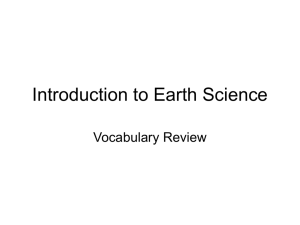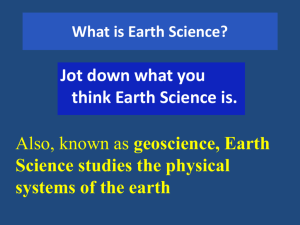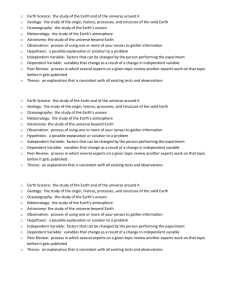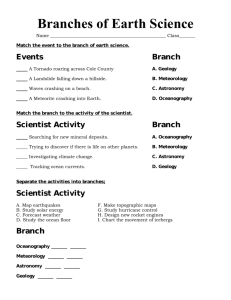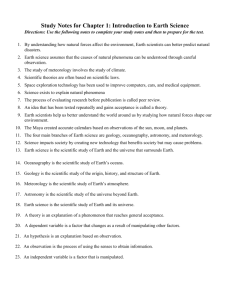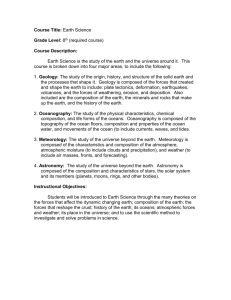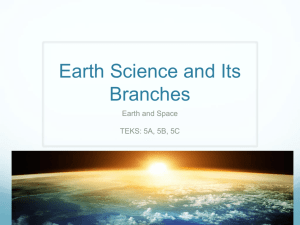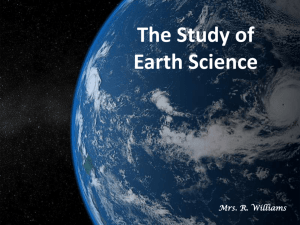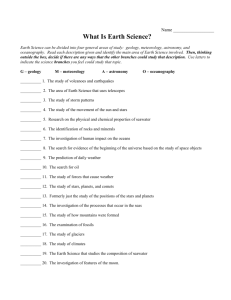Earth Science
advertisement
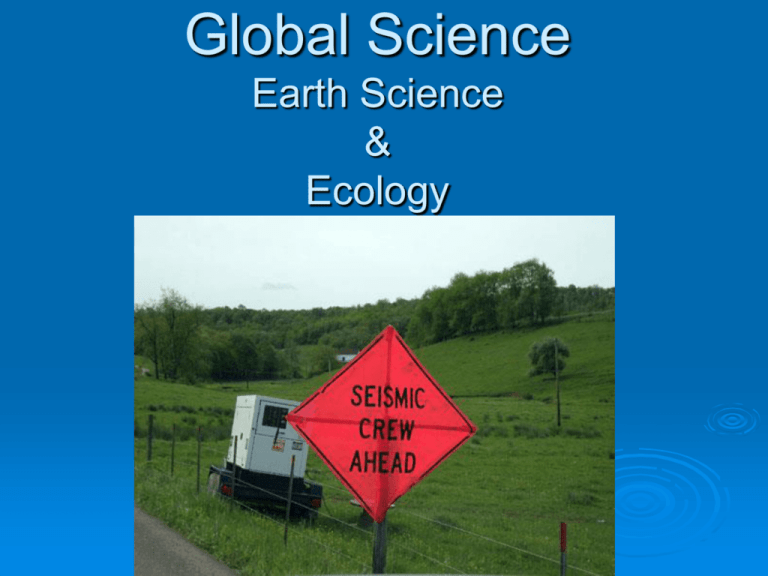
Global Science Earth Science & Ecology What is Earth Science? Earth Science is the study of the Earth and its neighbors in space. Some Earth scientists develop energy and mineral resources. Others study the impact of human activity on Earth's environment and design methods to protect the planet. Still others use their knowledge about Earth processes such as volcanoes, earthquakes and hurricanes to plan communities that will not expose people to these dangerous events. The Four Earth Sciences Do you think you know any of the four? Geology: Science of the Earth Geology is the primary Earth science. The word means "study of the Earth". Geology deals with: The composition of Earth materials Earth structures Earth processes The organisms of the planet How the planet has changed over time. Geologists search for fuels and minerals, study natural hazards, and work to protect Earth's environment. Geologic Map of PA Meteorology: Science of the Atmosphere Meteorology is the study of the atmosphere and how processes in the atmosphere determine Earth's weather and climate. Meteorology deals with: The weather How climate changes over time in response to the actions of people The study of meteorology is of critical concern for protecting Earth's environment. Oceanography: Science of the Oceans Oceanography is the study of Earth's oceans - their composition, movement, organisms and processes. Oceanography deals with: How the ocean can be used as an energy source. The oceans have a major influence on the weather and changes in the oceans can drive or moderate climate change. The oceans cover most of our planet and are important resources for food and other commodities. Oceanographers work to develop the ocean as a resource and protect it from human impact. The goal is to utilize the oceans while minimizing the effects of our actions. Astronomy: Science of the Universe Astronomy is the study of the universe. Astronomy deals with: The moon which drives the ocean's tidal system Asteroid impacts and how they affect Earth's inhabitants Energy from the sun and how it drives our weather and climates A knowledge of astronomy is essential to understanding the Earth. Astronomers can also use a knowledge of Earth materials, processes and history to understand other planets - even those outside of our own solar system. Earth is essentially a closed system. Can you think of an exception to this? The earth itself includes four spheres which interact and change constantly. The four spheres on earth The hydrosphere All the earth’s water. The atmosphere The earth’s gaseous envelope The geosphere or All the physical features on Earth except water. lithosphere. The biosphere. Living things, including plants, animals and humans Cycles on Earth All water on Earth is continually moving through the water cycle. A biogeochemical cycle involves the movement of an element, such as carbon, through the four spheres of the Earth system. The Earth system has three energy sources: solar energy geothermal energy tidal energy. h Strip Mining Fracking

